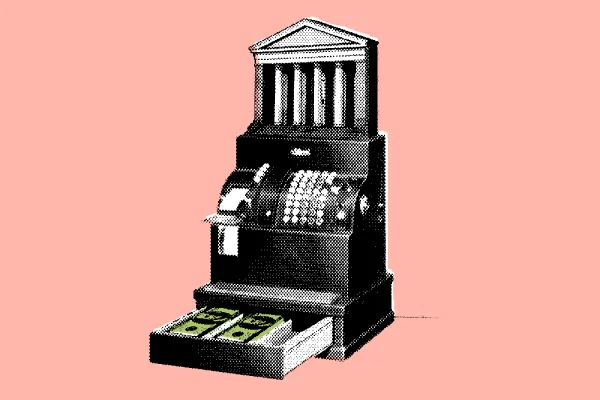The Fed says it’s going to keep interest rates low. You’d think that would make the outlook for bonds rosy. But not everyone is buying low interest rates.
Stepping back to see the larger picture, Jeffrey Nichols, senior economic analyst for Rosland Capital in Santa Monica, California, notes, “The Fed will be buying Treasury securities in the short-term and that should work for the short-term. But that leaves the Fed with little flexibility for the future.”
What’s spooking Nichols and plenty of other folk? Expectations of a period of rising interest rates because they see a reluctance on the part of other countries in continuing to buy dollar-denominated debt: Just look at China’s decision to buy Euros and dump dollars, reported on August 15 to have occurred in May and June. “With the euro much less scary now, countries like China are buying euros as an opportunity for diversification,” says Nichols.
His opinion is that we are headed for a long period of stagflation, with rising commodities and increasing inflation leading to expectations of higher nominal interest rates with bond prices falling. “The Fed is behaving as the financier of last resort, inflating its way out of pubic and private debt. We borrowed to live the high life, fueling the economy that led to long-term expansion, but on debt. And it’s become a heavy weight on the economy.”
Higher inflation, higher bond yields and falling bond prices in nominal terms. And why? The monetizing of the U.S. debt, he says. “The debasing of the dollar — look at the debt as a percentage of gross domestic product (GDP). The debt falls when the dollar is debased and inflation rises.
Is everyone buying this scenario? Two money managers face off on their take on the economy and its affect on the long-term bond outlook:
Tom Winmill is chairman of the Midas Investment Policy Committee that manages the Midas Perpetual Portfolio Fund and the Midas Fund (MIDSX), for which he is also portfolio manager. Both funds are top ranked, with the Midas Perpetual Portfolio Fund garnering a Morningstar 5-star rating. With assets under management of About $155 million, Winmill continues to like commodities and his top reasons are the dollar’s weakness and his expectation of worsening inflation.
Dan Genter is president and chief investment officer at RNC Genter Capital Management — about 3 million in AUM — in Los Angeles. His background is in macro economic research. Since he became vice president in 1983, he’s had direct responsibility for the majority of the firm’s institutional client relationships.
Tom Winmill: Lower consumer confidence has meant more interest in such less risky investments as dollar-denominated bonds and gold. But bonds are not going to stay strong. I’m expecting quality, big-cap growth company stocks to be strong like Coca-Cola and Apple Computer Inc.
Why am I not bond bull? The need for our country to refinance debt has become great. Warren Buffett wrote about this last year. The bust is going to happen. Interest rates can’t go a lot lower, but can probably go higher.
The borrowing needs of the U.S. means inflating money via the Treasury printing more money or through borrowing — and with an estimated $62 trillion debt load, that’s a lot of borrowing.
I think Uncle Sam probably already has maxed out his credit cards.
Dan Genter: When it comes to bonds, time is on your side. The economy is growing at a fairly slow rate and we don’t expect that interest rates are going lower. We know they’ll go up but the magnitude of the increase? We know it won’t rise at a significant rate — the Fed will do it slowly — and it won’t be in the near future.
The pressure is seeing out onto the runway ahead — we know things are moving slowly and we’re pretty sure the rate increases won’t happen for a year or so.
That’s why I’m advocating going to the mid-maturities and to sit there for a while just treading water. You can be in corporate or munis — some type of spread product that offers more yield than Treasuries.
Now looking farther ahead, say 12 to 18 months from now, you can see that in the six-to-twelve months you’ve built up a lead that was better than sitting on the sidelines in cash and that’s why time has been on your side.
In preparation for the interest-rate move, you’ll see that the bond curve will morph from a positively sloped yield curve to what looks like a barbell. As rates rise, you want to shift from a cluster of five-to-10-year-focused holdings out to the wings of the yield curve.
But you can’t time it exactly so if you’ve been in the 5-to-10 year bonds versus T-bills or one-year obligations, you’re not as exposed as you would have been if you’d been on the long-end.
Of course, the best thing to a bond investor is when interest rates go up because now you can get better returns. Navigating those raises is the challenge.
Rates on the 1-, 2-, 3-, 5- and 10-year bonds don’t go up simultaneously — the short rates go up a lot more. As the Fed starts tightening, the long-end is compensated for but the short-term bonds had an artificial ceiling because of the Fed rate. Long-rates have already reacted — you won’t have to move much. Move more to the short-end.
You’ve got to manage bonds actively. It’s no time to sit back with bonds on hold.
Investors should be looking at the slope of the yield curve. Concentrate on intermediate maturities now and every day that goes by as we see vacillations in stocks we’re treading water making our 3- to 3-1/2 percent. This is why I say time works to investors’ benefit.
When the curve is a barbell, if you keep mid-maturities, you’ll get your lips ripped off.
Janice Fioravante is a financial writer who listens to jazz as she looks for logic in economic analyses.






